On May 27th, we successfully launched our European Science Diplomacy online course. Since then, almost 4000 people registered to our course and more than 400 trainees have already received a S4D4C certificate. The community has been very enthusiastic and new registrations are still coming on a daily basis. This popularity only reassures us in the pertinence of science diplomacy, especially in times of global crisis. Students have so far expressed their satisfaction with the course and many recommended the course to their community.
Those recommendations have surely incentivised many to register, however, it is not always easy to know whether the course is suitable to one´s background and expectations. To answer those concerns, our authors held two introductory webinar targeted at potential enrolees. We also considered stakeholders that might want to recommend the course to their colleagues, students or employees while not taking the course themselves. Before actually recommending it or including it as teaching material in their courses and activities, this target group also needs more information about the course.
The two webinars gathered an audience of approximatively 300 participants, which were invited to not only listen to the presentations, but also to contribute via the chat and the survey tools that were used.
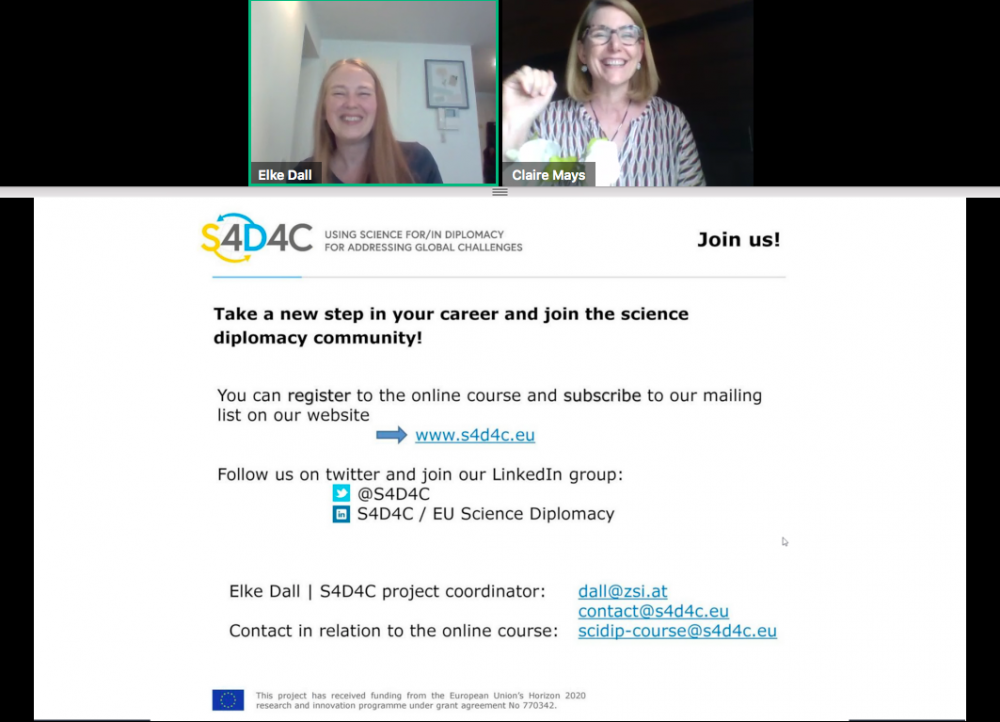
Elke Dall introduced the S4D4C project, its objectives and other activities beyond the course. In the second webinar, she was joined by Claire Mays, the project director of our sister project InsSciDE. Claire expressed that both projects were able to measure the world wide interest in science diplomacy through the enthusiasm that both the online course and the InsSciDE summer school generated. They witnessed that not only the interest for science diplomacy was growing, but the quality and strength of the profiles of participants. Prior to the InsSciDE summer school, students were recommended to take S4D4C’s online course, which enabled them to directly dive deeper into the topics since students had already acquired considerable knowledge.
After the general introduction, Lorenzo Melchor took the floor and asked the participants to answer some questions to get to know the audience better. In both webinars, participants came from various backgrounds with the greatest part coming from academia and research.
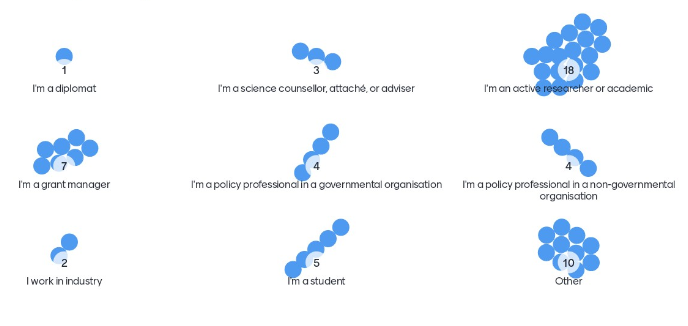
While most participants identified as Spanish, many European and non-European countries were represented.


Lorenzo then proceeded by inviting some of the authors to present their modules to give a better idea to the participants of what they could expect from the course.
Maria Josten introduced module 1 “How to get started”. In this module, students get acquainted with the platform technicalities and how to mark lessons when they have been completed in order to retrieve a certificate.
With module 2, students start their learning experience and are introduced to science diplomacy and its multiple conceptualisations. Lorenzo recalled the importance of understanding that science diplomacy is an umbrella term, which encompass various practices and meanings.
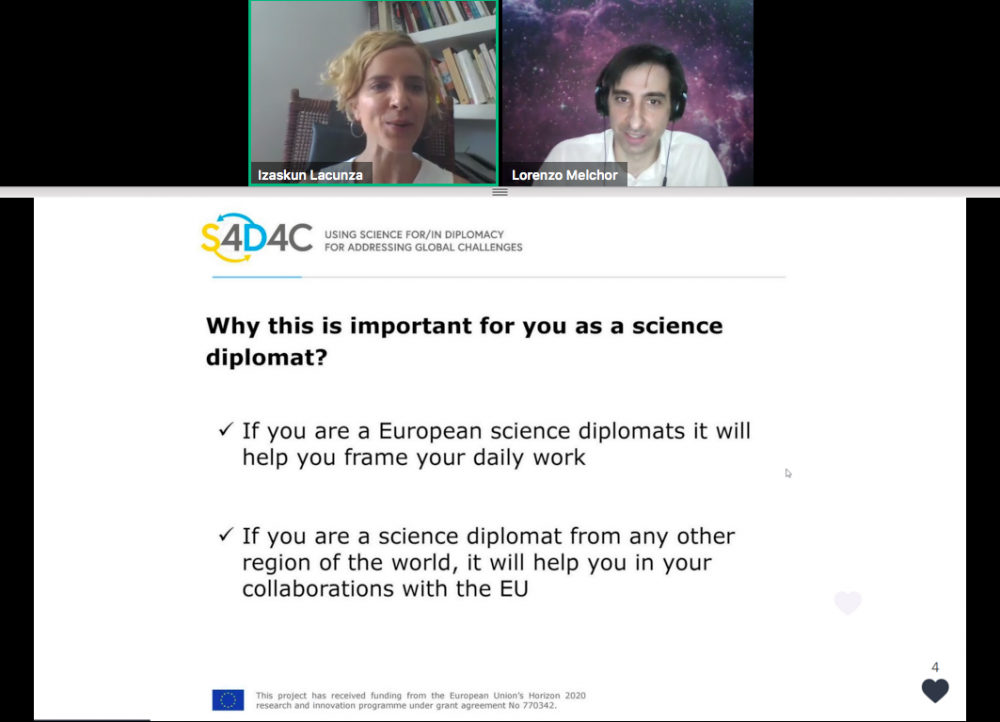
Izaskun Lazcunza then introduced module 3 which describes stakeholders and networks of science diplomacy. In this module, students are provided with information which help them to grasp the richness of the science diplomacy ecosystem, composed of many stakeholders beyond diplomatic institutions. Module 4, addresses a part of that ecosystem and investigates how the EU understands and practices science diplomacy. The module covers the historical development of the EU, its institutional set up and expand on how the EU uses science diplomacy to address global challenges. This module is not only relevant for European students, which will grasp a greater understanding of the environment within which they operate, but also for students from outside the EU, as they will be given the tools to understand the EU as an important partner.
Several national and thematic approaches are covered in module 5, which presents different strategies and design using science diplomacy. Maria Josten stressed the importance of knowing how science diplomacy is being practiced depending on the region or the topic at hand.
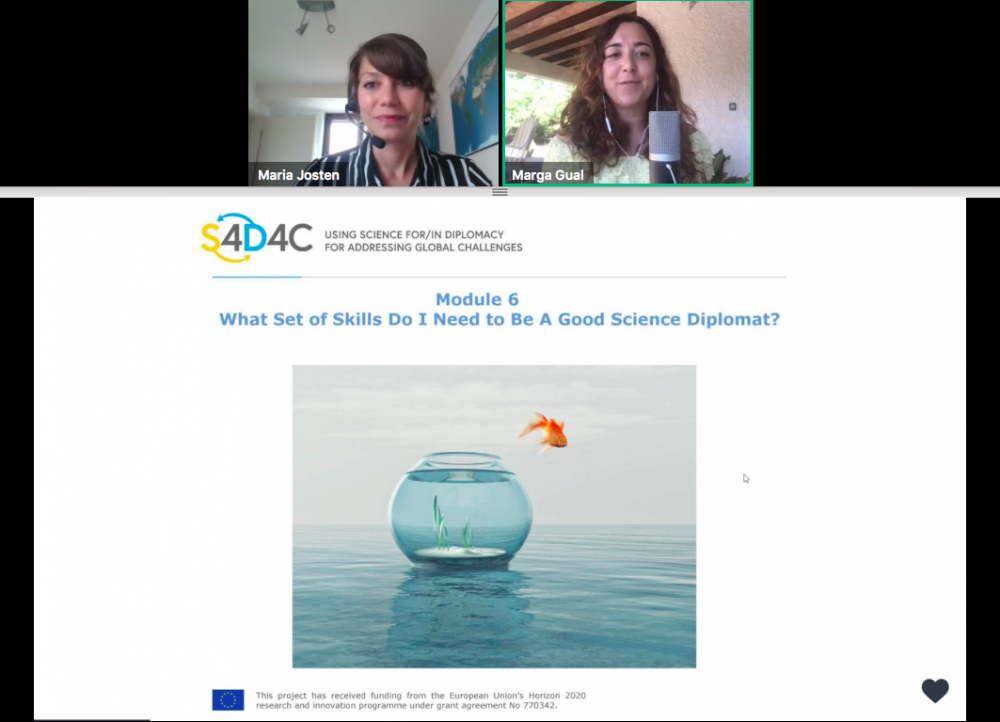
After learning about how science diplomacy is understood, how it is practiced, by whom and where, module 6 provides students with a discussion on which skills are needed to practice science diplomacy at the individual level. Marga Gual Soler, the main author of module 6, described its focus on which skills are necessary and how to acquire them to successfully interact within the science diplomacy interface. Since both scientific and diplomatic areas need different skills, one also needs to gain transition skills to be able to address and bridge the two communities.
Module 7, introduced by Lorenzo Melchor and Nadia Meyer, illustrates learnings from the previous modules by presenting six practical examples derived from S4D4C and InsSciDE case studies. The empirical case studies enable an understanding through practice of the concept of science diplomacy.
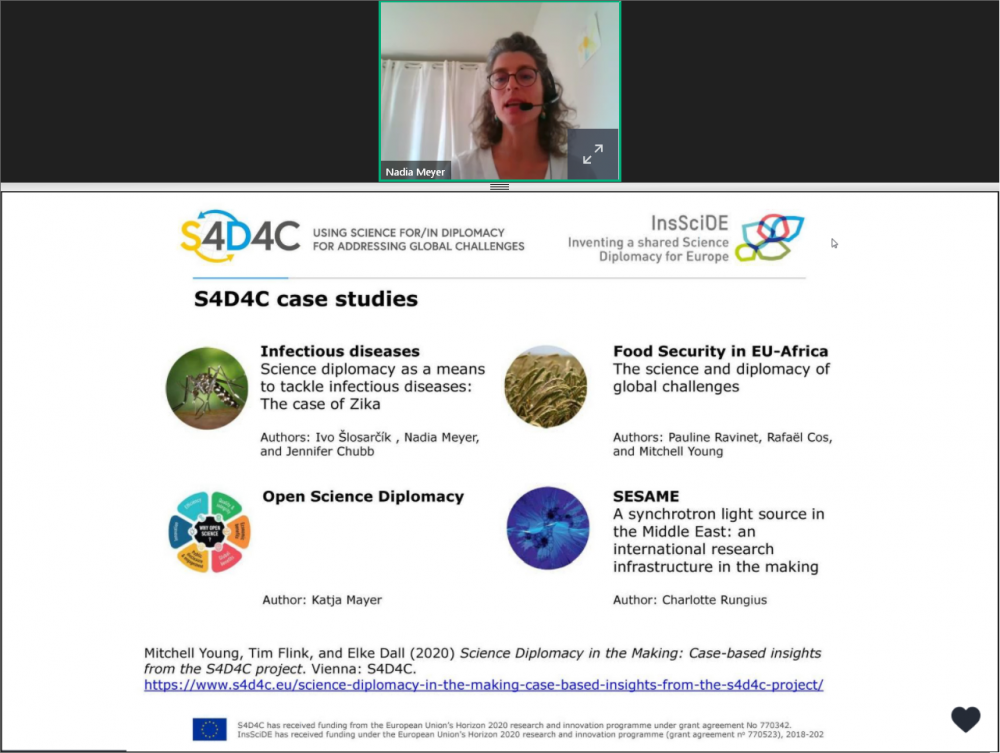
Claire Mays expressed how important it is to look back at historical developments to understand our world today, and realise that science diplomacy, while being a new concept, is actually an old practice. The use of both contemporary and historical case studies brings great depth to this module.
Finally, the last module provides students with additional learning material to deepen their knowledge if they wish to do so. The module is not mandatory but still has to be marked as completed to obtain the certificate. Finally, after completing all modules, a “Satisfaction Survey” should be filled in which enables us to improve the overall learning experience overtime.
During the presentation participants were able to ask questions in the chat, which were answered at the end of the session. The questions raised a few important practical points:
The course is free of charge and is awarded by a certificate from the S4D4C project, acknowledged by the coordinator Elke Dall. There is no time limit to complete the course which will continue to be present on our website for four years after the project ends (until 2025). Moreover, we have also been working for the course to be available on other platforms. For any questions regarding the course please contact us at scipdip-course@s4d4c.eu
If you wish to interact with fellow students, we recommend joining the LinkedIn group of the EU Science Diplomacy cluster. We also advise to engage with us and other participants via twitter, where the science diplomacy community is very active. Moreover, S4D4C is currently planning new webinars for course enrollees which will connect students with one another. Lastly, our international conference which takes place in the spring of 2021, will be the perfect occasion to build the community further. Stay tuned!
Have we convinced you? If so, join the community today and register for the course here!

